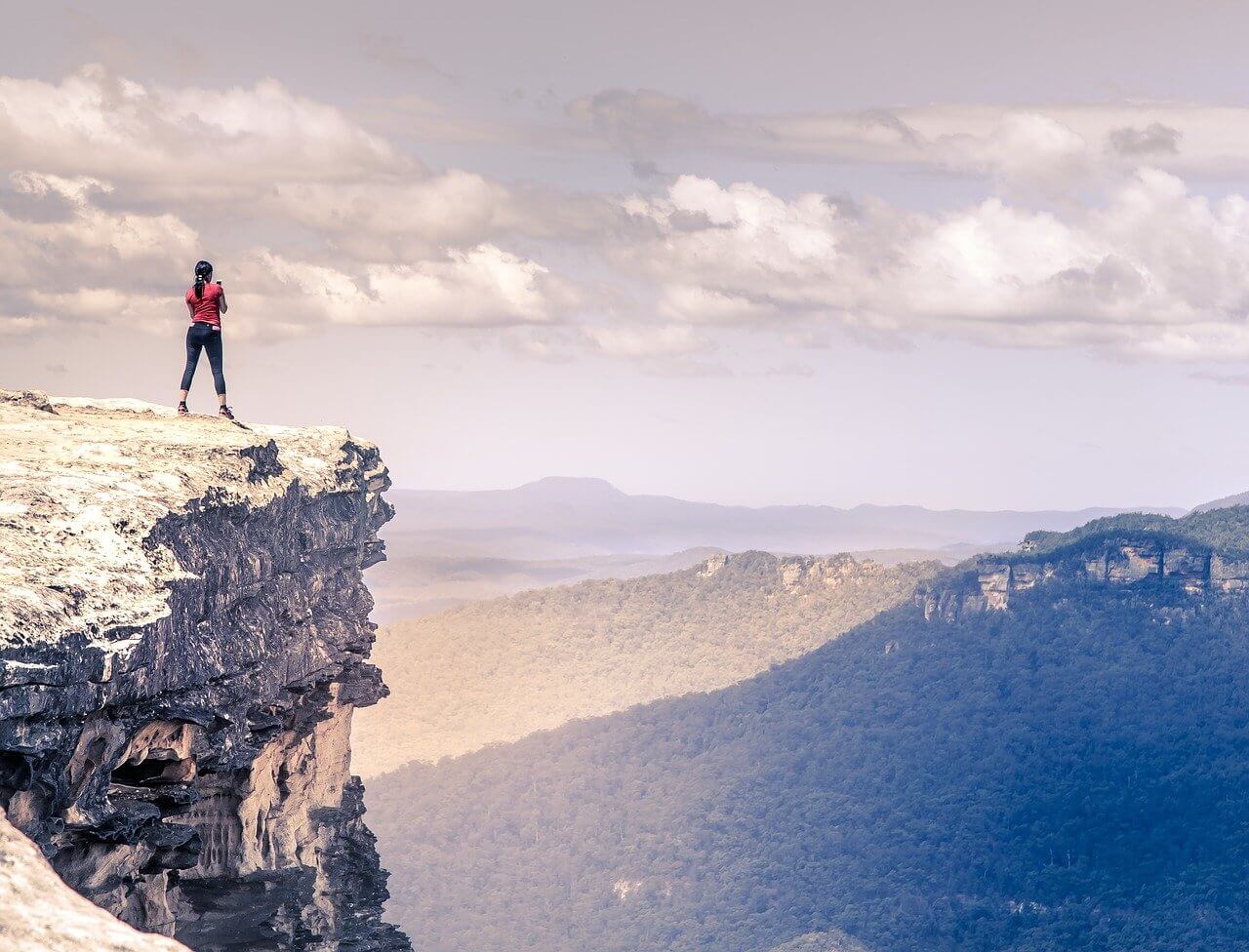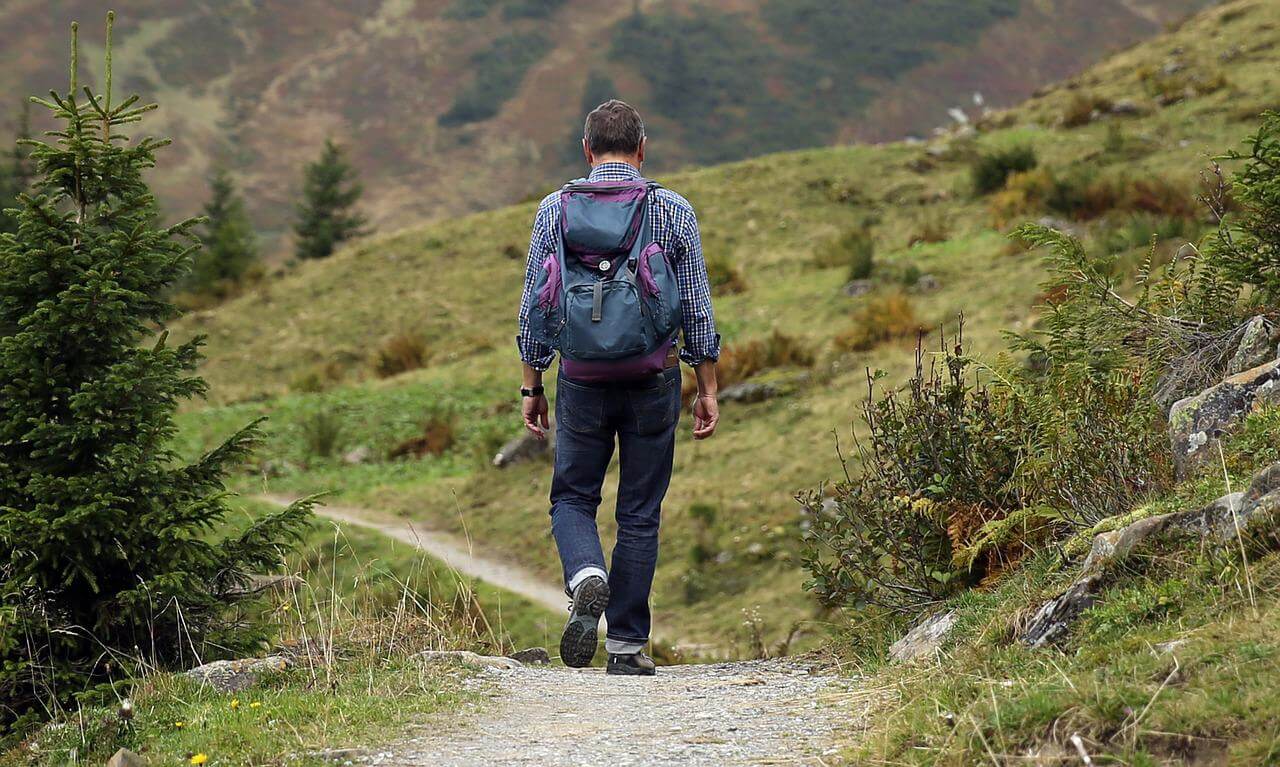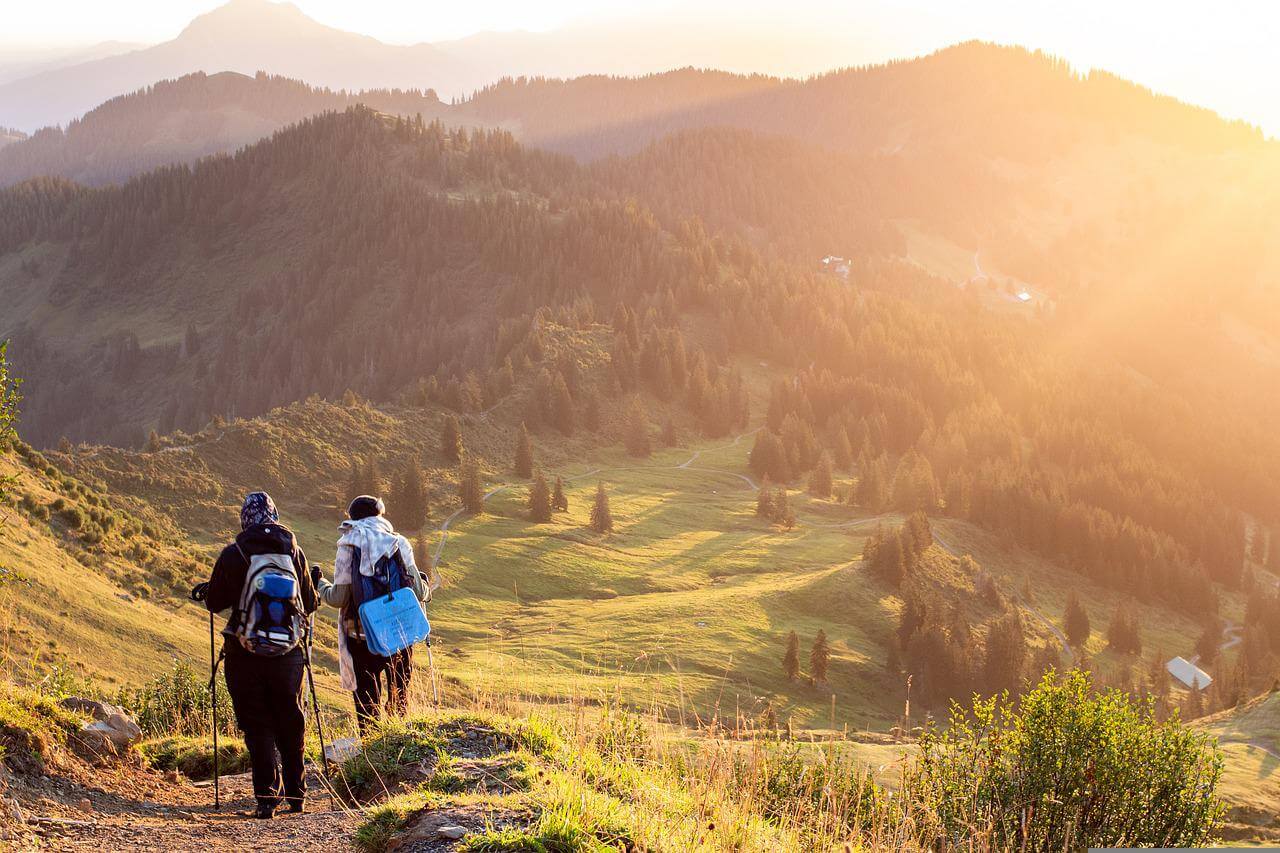A walk-in Australia’s wilderness is a ritual woven into the rich fabric of the nation’s past. Thousands of years ago, the country’s first inhabitants walked the “walkabout,” a spiritual journey that traced the ancient footsteps, or “songlines,” of their ancestors. Today you can follow in their footsteps.
Top hikes in Australia range from independent half-day trips through bushy bushveld and along sapphire-studded beaches to guided multi-day treks through the country’s scorching heart, where rugged gorges and red deserts challenge even the most hardened hiker.
You can break the longer walks, known as the “Great Walks of Australia”, into smaller sections depending on your free time and fitness level. Many of Australia’s best walks are through World Heritage-listed wilderness areas, where you can see some of the country’s most bizarre wildlife – from wallabies and wombats to dingoes, kangaroos, and echidnas.
Aspiring climbers can even climb Australia’s highest mountain in less than a day. Wherever your tour takes you in this wild and sun-drenched land, the spectacular scenery will touch your soul just as the indigenous people did thousands of years ago. Aspiring climbers can even climb Australia’s highest mountain in less than a day. Wherever your tour takes you in this wild and sun-drenched land, the spectacular scenery will touch your soul just as the indigenous people did thousands of years ago.
Aspiring climbers can even climb Australia’s highest mountain in less than a day. Wherever your tour takes you in this wild and sun-drenched land, the spectacular scenery will touch your soul just as the indigenous people did thousands of years ago.
10 Top Rated Hikes Destination in Australia
1. Kings Canyon Rim Walk, Northern Territory
One of the country’s most famous day hikes, the four-mile Kings Canyon Rim Walk in Watarrka National Park follows the lip of a spectacular 500-foot-deep gorge in Australia’s Red Centre. Because of the scorching heat, it’s best to start this three- to four-hour walk before sunrise.
The rising sun paints the landscape in rich shades of rose gold and this is also the best time to see wildlife, including kangaroos, zebra finches, and White-plumed honeyeaters. The first part of the hike requires 500 steps to the rim of the gorge, but it’s worth it for the spectacular views.
Once at the top, follow the U-shaped path around the sandstone cliffs and gaze into a wonderland of weathered, dome-shaped rock formations. Ancient cycads; and the garden of Eden, an unlikely oasis of lush vegetation and a perennial waterhole. After the winter rains, cascades tumble down the cliff faces.
The Kings Canyon Rim Walk requires an average to a high level of fitness and is a one-way loop, so you won’t encounter hikers going in the opposite direction. If possible, avoid hiking in the extreme temperatures of September through May. Take plenty of water, sunscreen, and insect repellent. King’s Canyon Resort is about four miles from here with accommodations ranging from campgrounds to elegant rooms.
Hikers looking for a gentler hike in the gorge can try the easy 1.6 miles After the winter rains, cascades tumble down the cliff faces. The Kings Canyon Rim Walk requires an average to the high level of fitness and is a one-way loop, so you won’t encounter hikers going in the opposite direction. If possible, avoid hiking in the extreme temperatures of September through May. Take plenty of water, sunscreen, and insect repellent.
Take plenty of water, sunscreen, and insect repellent. King’s Canyon Resort is about four miles from here with accommodations ranging from campgrounds to elegant rooms. Hikers looking for a gentler hike in the gorge can try the easy 1.6 miles do not hike in the extreme temperatures of September through May.
2. Mount Gower, Lord Howe Island, New South Wales
Located on World Heritage-listed Lord Howe Island off the north coast of New South Wales, Mount Gower is 875 meters high and is considered one of the best day hikes in the world. This 14-kilometer loop hike leads to the mountaintop cloud forests.
Along the way you can explore the botanical and wildlife wonders of this pristine island where visitor numbers are limited to protect the natural environment. Fern-filled forests, rare orchids, and moss-covered trees lend the landscapes a sense of history as you scale this lush peak on the southern end of the island.
Along the way you can enjoy views of the neighboring towns of Mt. Lidgbird ; balls pyramidthe highest sea level in the world at 565 meters; the lagoon; and the northern settlement of the island. Reaching the summit on this moderate-to-difficult hike takes about five hours, and the descent takes about four hours, with ledge crossings and rope sections to be mastered along the way.
From March to September, the surprisingly fearless Providence Petrel appears at the summit for an up-close look. Guided walks are highly recommended and provide insight into the island’s unique ecology and natural history.
3. Cape to Cape Track, Margaret River, Western Australia
In the southwest corner of Western Australia, 260 kilometers south of Perth, this rewarding multi-day hike meanders 135 kilometers along coastal cliffs, surf beaches and forests of giant karri trees. The entire trail, which lies between the Cape Naturaliste and Cape Leeuwin lighthouses along the Margaret River shoreline, is within a national park and takes between five and seven days to complete. But you can also choose easier sections for half-day or full-day hikes.
Highlights include coastal formations such as jagged Sugar Loaf Cool cascades jut out from the sea, clean sun-kissed beaches and sea cliffs overlooking the crashing surf. Watch out for whales between June and December. One of the most beautiful sections of the walk is over the cliffs of Contos Beach where wildflowers thrive in spring and kangaroos often seek cover under shady undergrowth. Another section crosses the mouth of the Margaret River as it flows to the sea.
Campsites are dotted along the route, as well as a range of more comfortable accommodation, making it a good choice for hikers who prefer not to rough it after a long day of walking. Tour companies also run guided hikes along this route.

4. Great Ocean Walk, Victoria
The Great Ocean Road, along the Victoria Shipwreck Coast, is one of Australia’s most famous scenic drives, but you can also enjoy the stunning scenery on foot. Along one of the most spectacular stretches of coastline in the country, this multi-day easy hike carves 104 kilometers from the town of Apollo Bay through Port Campbell and Great Otway National Parks and takes up to eight days. This epic hike evokes the power of Mother Nature. Perhaps the most famous section is from Princetown to Glenample.
Here a cliff path towers over the famous Twelve Apostles, the towering rock formations of the coast sculpted by the howling winds and the pounding of the surf. Standing above the treacherous ocean, one can imagine the forces of nature eroding this scalloped coastline over thousands of years. Other highlights include circumnavigating some of the country’s highest cliffs, hiking through wildlife-rich wetlands and casuarina forests, and descending to windswept beaches where the rusted anchors of ancient shipwrecks lie.
From June to September search for whales in the windswept sea. Most of the hike is easy to moderate, although the Wreck Strand walk section is more difficult. Accommodation along the trail ranges from campsites to eco-hotels and posh hotels, and tour operators offer guided hikes.
5. Larapinta Trail, Northern Territory
A quintessential Aussie outback adventure, the remote Larapinta Trail in the Northern Territory follows in the footsteps of the country’s first settlers across ancient desert landscapes and the rugged ridges of the West MacDonnell Ranges . The entire 223-kilometer route takes up to 14 days and is best tackled by experienced hikers.
However, you can choose a combination of the 12 separate sections depending on your time and ability. The route begins at the old Alice Springs Telegraph Station and weaves west to the dramatic beauty of Simpson’s Gap , Ormiston Gorge , and Stanley Chasm. It ends with a steep climb up Mount Sonder, the highest point on the route, with 360-degree views of the magnificent desert landscape.
Sleeping under the star-studded desert sky in a Bushman’s tent is part of the adventure here, or you can pitch a tent at one of the wilderness camps. Guided group tours are recommended for this trek due to the harsh climate and its rugged and remote location in Australia’s Red Centre.
6. Fraser Island Great Walk, Queensland

Following in the footsteps of the Butchulla natives of World Heritage-listed Fraser Island, this 90-kilometer hike takes in the top tourist attractions of the planet’s largest sand island. The trail follows old logging routes between Dilli Village and Happy Valley through subtropical rainforest and mangroves and along the shores of windswept beaches.
Highlights include strolling along the rainforest boardwalk by the crystal clear waters of Wanggoolba Creek , swimming in the striking blue waters of Lake McKenzie and gazing up at the towering sand dune of Lake Wabby. at the main station,Visit the exhibits to explore the island’s history and ecology, and keep an eye out for dingoes, Australia’s wild dog. This relatively easy walk takes about six to eight days, and you can focus on smaller segments if you’re short on time. Basic hiker camps lie along the route, as well as a few private guesthouses and the comfortable Kingfisher Bay Resort.
7. Blue Gum Forest, Blue Mountains, New South Wales
About 115 kilometers from downtown Sydney, in the world-renowned Blue Mountains National Park, the steep trek to the Blue Gum Forest has become something of a spiritual pilgrimage for Australian bushwalkers. This beautiful 16-acre forest was saved from destruction in the early 1930’s by keen bushwalkers who pooled funds to purchase the land.
Today it graces the list of popular hikes in this magnificent wilderness. You can access the forest by a variety of routes, but one of the most popular is the three-mile loop trail from Perry’s Blick. The hike takes about four hours. Before descending into the Grose Valley, take in the stunning views from the lookout, where eucalyptus forests stretch as far as the eye can see.
The hike is a sensory feast. Cockatoos screech across the valley, water laps over smooth rocks in a cool stream, bark crunches underfoot and the fresh, earthy smell of the bush invades your senses. Those wishing to stay overnight can pitch a tent at the nearby Acacia Flat campground. You can also hike from the famous Gum Forest to the Blue Gum Forest Govetts Jump Attention.

8. Wineglass Bay Circuit, Tasmania
Named for its voluptuous curves, Wineglass Bay in Freycinet National Park on the east coast of Tasmania is a gorgeous crescent of white sand and sapphire sea. It is often voted among the top 10 beaches in the world. Tasmania’s Oyster Bay tribe once traversed these lands, and now wanderers can traverse the same ancient paths.
The 12-kilometer walk through the Wineglass Bay Circuit offers a perfect view of this sparkling bay backed by the pink peaks of the Hazards. The walk climbs steeply to the Wineglass Bay lookout where you can enjoy a magnificent view of the bay. From here the trail threads through the hazards and descends to the beach itself. Linger here to enjoy the raw beauty.
Another path leads across the isthmus to the rock-strewn Hazard Beach. Along the way, keep an eye out for some of the whimsical wildlife that makes this home, including wombats, wallabies, and the eastern quoll. The hike is easy after the steep climb to the viewpoint.
The summer months of December to April are the best time to tackle this trek when the days are longer and the weather is warmer. This hike is one of Tasmania’s Great Short Walks and forms part of the 30km Freycinet Peninsula Circuit. Accommodation ranges from rustic campsites to luxury ecovillages.
9. Kosciuszko Walk, New South Wales
The Kosciuszko Trail offers a round trip to the 2,228 meter summit of Mount Kosciuszko, Australia’s highest mountain, in under five hours thanks to the Threselbahn Kosciuszko Express train. From June to October this well-groomed and well-signposted route is mostly snow-covered, so the 14-kilometer loop is best attempted in the summer.
From the chairlift, the trail skirts the rugged granite cliffs of the Rams Head Range through wildflower-strewn heathland and past the glacier-carved Lake Cootapatamba. Stop at the lookout and admire spectacular views of Australia’s alpine country. You’ll also cross the Snowy River’s humble sources from the famous bush ballad, The Man from Snowy River, by Banjo Paterson, the legendary Aussie bard.
This is a great, moderate walk for budding mountaineers (and even older kids) who want to scale a country’s highest mountain but aren’t quite ready for an expedition to Everest. You can easily tackle the walk independently. Make sure you dress in layers and take plenty of water.
10. Flinders Chase Coastal Trek, Kangaroo Island, South Australia

Streaked with rugged, windswept beauty, the Flinders Chase Coastal Trek features limestone cliffs overlooking the wild sea on the west coast of Kangaroo Island in South Australia. This one-sided 12-mile hike runs between the Ravine des Casoars and West Bay and offers numerous opportunities to spot Australian wildlife.
Kangaroos, koalas, goannas, echidnas and wallabies are some of the creatures that inhabit the coastal scrubland. Look out to sea and you can sometimes see whales, seals and ospreys. Along with the wildlife, other highlights include the rugged wind and sea-sculpted limestone stalagmites that rise from the headland. Campsites are along the route.


